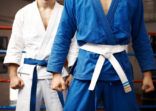Asia ex-Japan equities have recently become a gem of an asset class thanks to relatively low valuations, a recovery in oil prices and room for more monetary policies leading to improving, if not sustainable, economic growth and company earnings.
“Within emerging markets, we remain keener on Asia ex-Japan than Latin America, given both the increased leeway for policy adjustment within the former,” said Deutsche Wealth Management APAC CIO and head of decretionary portfolio management Tuan Huynh in a quarterly outlook report released earlier this week.
Standard Chartered Wealth Management concurred: “We remain positive on Asia ex-Japan equities, which rank as our most preferred market globally.”
Yet the MSCI Emerging Markets Index has surged 17.7% year-to-date versus 12.85% for the MSCI AC Asia ex-Japan Index.
The underperformance “represents an opportunity, as some of the prior concerns – bank [non-performing loans] in China, weakness in global trade and US rate hike risks – are abating”, Standard Chartered said.
Against this backdrop, Germaine Share, Morningstar’s senior analyst for manager research, provides a comparative analysis of the Blackrock GF Asian Dragon Fund and the Schroder ISF Asian Opportunities Fund.
Investment Strategy

The two funds have some similarities – a relatively concentrated portfolio with 50-60 names for the Schroders fund, and less than 80 for Blackrock’s product, Share said.
They also tend to be benchmark-agnostic, as reflected in active share, a measure of how far the fund deviates from a benchmark (in this case, the MSCI AC Asia ex-Japan Index). Active share is 73% for both funds.
However, the investment styles differ, which is reflected in their holdings in China-related stocks.
Top 5 country exposure (as of September 30)
| Blackrock fund % (% in benchmark) | Schroders fund % (% in benchmark) | |||
| 1 | China | 33.4 (32.5) | China | 23.6 (32.5) |
| 2 | Korea | 14.3 (16.8) | Taiwan | 17.5 (14.4) |
| 3 | India | 13.3 (10.0) | India | 17.3 (10.0) |
| 4 | Taiwan | 11.6 (14.4) | Hong Kong | 16.5 (11.3) |
| 5 | Indonesia | 7.8 (3.2) | Korea | 8.8 (16.8) |
Source: Morningstar
For the Blackrock fund, portfolio manager Andrew Swan uses a flexible, style-agnostic approach since he began managing the fund in August 2011, Share noted.
“Starting in late 2015, Swan has focused on the value theme given his belief that there would be a tepid economic recovery this year.
“He doesn’t necessarily say that he likes China, but China contains a lot of value stocks, such as some industrial and material names that had been beaten down due to overcapacity issues.”
Still, the investment process combines both top-down and bottom-up analysis and hence the portfolio remains selective, she added. “For example, Chinese banks are known to be cheaply valued stocks as well, but [Swan] chose to stay away from those because of the policy headwinds and the central bank cutting interest rates, which puts pressure on banks’ net interest margin.”
The bottom-up approach has resulted in some exposure to growth stocks, such as LG Household & Health Care, the fifth largest holding in the portfolio.

Germaine Share, senior analyst for manager research at Morningstar in Hong Kong
On the other hand, Robin Parbrook, manager of the Schroders fund, focuses on quality growth and pays a great deal of attention to “alignment of interests between company management and the shareholders,” Share said.
“China has a very state-owned enterprise-dominated economy where the big companies do not necessarily act for the best interests of shareholders. As a result, [the fund] tends to be quite underweight on China.”
The same applies to stocks in Korea, which has more family-run businesses and hence corporate governance issues. Instead, the fund favours Hong Kong and India, “which are more private enterprise-focused”.
It also has a much more stable portfolio, with the turnover ratio standing at 35% in 2015. “It’s a truly buy-and-hold strategy. Once [Parbrook] picks the stocks he likes, he will hold on to them for a long time and let them grow over the long-term.” Examples include Hong Kong conglomerate Jardine Matheson and Indian private sector bank HDFC Bank.
In contrast, the Blackrock fund’s changing investment style to react to the market environment led to a higher turnover ratio of 83% last year.
“As the market has become more volatile, portfolio turnover also turned a lot higher,” Share explained.
Performance

The Blackrock product slightly outperformed the Schroders fund over a three-year period by returning 15.3% and 14.7%, respectively, versus a benchmark return of 6.4% and 2.52% for the APAC ex-Japan equity funds sector available within the Hong Kong market, according to FE data.
Swan has done a very good job picking the right style at the right time, Share said. “It is perhaps more intuitive and he relies heavily on his experience, which means it is not necessarily repeatable – you are counting on him to make the right calls every time.”
Meanwhile, Schroders’ emphasis on quality growth stocks means the fund can be more resilient during a downmarket with lower volatility, she added.
Volatility of the Blackrock and Schroders funds, measured in standard deviation, stands at 15.92 and 12.54 respectively. The category average is 15.08, Morningstar data showed.
“Swan goes where the market is taking him. So sometimes when the market is more cyclial, he would invest more in cyclical sectors like industrials and materials, which are likely to increase the volatility.”

The Schroders fund offers more downside protection thanks to its preference for quality stocks, as shown in the performance during the downmarket in the second half of last year, Share added.

















